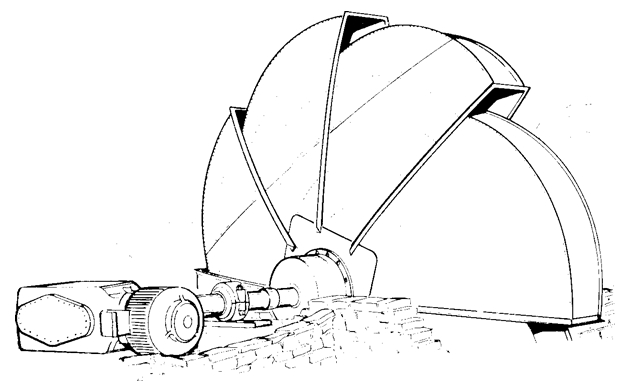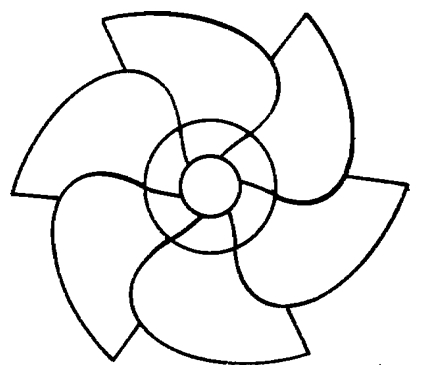Scoop wheels (Sakia, Tympanum or Tablia)
| |
|
|
|
|
|
|
|
|
|

The scoop-wheel (sakia in Egypt where it originated) has some factors in common with the noria. Although widely used in Egypt it has failed to become popular anywhere else. It is however an efficient and effective device.
It consists of a large hollow wheel with scoops around its periphery, which discharges water at or near its hub rather than from its top. The diameters for sakias range from about 2-5m; since water discharges at their hub level, the rule of thumb used in Egypt is that a sakia will lift water through a head of half its diameter less 0.7 m, to allow for the depth of submergence of the rim in order to scoop up water effectively. Therefore sakias of diameters from 2-5m will lift water from 0.3-1.8m respectively.
Sakias are now normally made from galvanized sheet steel. Second-hand vehicle roller bearings are commonly used to support the substantial weight of a sakia and its water contents. Most sakias are animal powered, but they are increasingly being driven by either mains electric motors or small engines, via suitable reduction gearing. The normal operating speed is 2-4 rpm for animal-driven sakias, and 8-15 rpm for motorised or engine-powered units.
Various different spiral shapes have evolved for the internal baffle plates in the sakia, and the Hydraulic Research and Experimental Station (HRES) in Egypt tested various models to try to determine the optimum design. The best shaped designs were measured as being as much as 50% better than the worst. Since some 300,000 sakias are in use in the Nile valley and Delta, optimization of the design could yield substantial aggregated benefits. An important feature of the the three most successful sakia variants tested is that the outer compartments divided by the internal baffle plates discharge first into individual collection chambers which in turn discharge through holes surrounding the hub instead of having a common discharge orifice as on the more traditional designs. This prevents water running back into the compartment adjacent to it.
The types of sakia with separate discharge points for each compartment are distinguished by the generic name "tablia". A further advantage of the tablia type of device is that the water discharges a few centimeters above the centre shaft and therefore increases the useful head in relation to the diameter; especially with smaller machines. Typically a 3m tablia will lift water 1.5m compared with 0.90m for a centre-discharge sakia.
Another important conclusion from the tests by HRES was that for wheels operated in the 2-15rpm range, 6-8 compartments provide the optimum discharge.
The following performance might be expected from traditional sakia designs:
| diameter of sakia | head lifted | output |
|---|---|---|
| 5m | 1.8m | 36m3/h |
| 4m | 1.3m | 51m3/h |
| 3m | 0.9m | 75m3/h |
| 2m | 0.3m | 114m3/h |
Manuals, videos and links
- VIDEO: Traditional foot-driven pump, Vietnam This pump uses a chain of a scoops to lift water (in this case for draining a paddy field) in Huong Tra, Central Vietnam.
Acknowledgements
- REVIEW OF PUMPS AND WATER LIFTING TECHNIQUES. Natural Resources Management and Environment Department, Food and Agriculture Organization (FAO).


